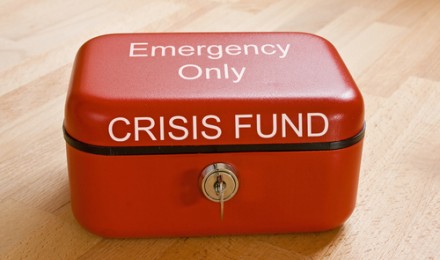Before investing bonds, review your financial circumstances and formulate a plan that fits your investment objectives. A person age 35 would likely have a different investment approach compared to an individual age 60 and close to retirement. While stocks may offer investors higher returns over the long run, equities have more volatility than bonds. Many investors balance their portfolios by investing in bonds that have lower returns in exchange for less volatility.
Besides volatility, bond investors must also consider other factors, such as bond pricing, ratings and risks. Risks include credit, interest rate and annual expense risks.
Bond Prices
Issuers tie bond prices to different benchmarks. Sometimes referred to as benchmark yield curves or benchmark pricing curves, benchmarks consist of securities that meet certain yields and maturity dates. Most issuers tie bond prices to “on-the-run” U.S. Treasuries – the latest bonds, notes and bill with maturity ranges of three months to 30 years.
For example, an issuer might choose the t10- year Treasury bond as its benchmark for a 10-year corporate bond. Other benchmarks include Swap Curve and Agency Curve.
A bond investor who purchases a bond and keeps it to maturity receives the face value of the bond and the annual yield, which consist of a fixed amount, calculated on the bond’s interest rate. If the investor sells the bond before the maturity date, the face value of the bond changes according to the prevailing interest rate and the fixed yield tied to the bond.
A bond sells at a premium or discount to its face value. If interest rates increase, the bond’s face value decreases. This inverse relationship between bond prices and interest rates assure the fixed coupon rate pays the same amount.
Bond Ratings System
Investors should also familiarize themselves with the bond ratings system, which determines the credit risk of the bond issuer. Blue chip companies – firms with a reputation for quality products and services, and a history of solid earnings and dividend growth, have the highest credit ratings.
Crediting rating agencies, such as Fitch Ratings, Standard & Poors Rating Services and Moody Investor Service review issuers and a give a rating based on their assessments of the issuer’s ability to repay debt security obligation – principal and interest, in accordance with the schedule.
The best possible rating starts at “Aaa/AAA”, which means an investment grade bond of the highest quality/lowest risk. At the low end of the chart, “C/D”, this translates into a junk bond issuer “in default.” Credit rating agencies use five additional ratings between the two extremes.
Bond Rating Table
| Moody’s | S&P/Fitch |
Grade |
Risk |
| Aaa | AAA |
Investment |
Highest Quality |
| Aa | AA |
Investment |
High Quality |
| A | A |
Investment |
Strong |
| Baa | BBB |
Investment |
Medium Grade |
| Ba, B | BB, B |
Investment |
Speculative |
| Caa/Ca/C | CCC/CC/C |
Junk |
Highly Speculative |
| C | D |
Junk |
In Default |
Source: Investopedia
As a bond increases in risk, the issuer must pay a higher yield to attract investors. Junk bonds can present more risks than some stocks.
Other Bond Risks
Interest rate risk refers to the possibility of bond values fluctuating in respond an increase or decrease in interest rates or the “absolute level of interest rates.” Interest rate changes affect bonds more than stocks An increase in interest rate decreases the value of bonds prices and vice versa.
When interest rates go up, the opportunity cost incurs by bondholders decreases. Investors can receive higher interest payments by moving their money into assets that pay higher rates of interest. A bond increases in value if it pays a fixed rate of return compared to other investment options with lower yields because of an interest rate decrease.
For example, a bond with a face value of $1000, 10-year maturity and fixed coupon of 6 percent has more value than a new bond with the same face value and maturity and a coupon of 3.5 percent.
Bond investors must review and compare the annual fee risk associated with bond investing. Small brokerage accounts might charge account holders a small fee, such as $25 per year. Larger bond brokerage accounts charge a specified number of basis points per bond or a percentage of securities assets, such as 0.035 percent a year.
Before investing bonds, review your financial circumstances and formulate a plan that fits your investment objectives. A person age 35 would likely have a different investment approach compared to an individual age 60 and close to retirement. While stocks may offer investors higher returns over the long run, equities have more volatility than bonds. Many investors balance their portfolios by investing in bonds that have lower returns in exchange for less volatility.
Besides volatility, bond investors must also consider other factors, such as bond pricing, ratings and risks. Risks include credit, interest rate and annual expense risks.
Bond Prices
Issuers tie bond prices to different benchmarks. Sometimes referred to as benchmark yield curves or benchmark pricing curves, benchmarks consist of securities that meet certain yields and maturity dates. Most issuers tie bond prices to “on-the-run” U.S. Treasuries – the latest bonds, notes and bill with maturity ranges of three months to 30 years.
For example, an issuer might choose the t10- year Treasury bond as its benchmark for a 10-year corporate bond. Other benchmarks include Swap Curve and Agency Curve.
A bond investor who purchases a bond and keeps it to maturity receives the face value of the bond and the annual yield, which consist of a fixed amount, calculated on the bond’s interest rate. If the investor sells the bond before the maturity date, the face value of the bond changes according to the prevailing interest rate and the fixed yield tied to the bond.
A bond sells at a premium or discount to its face value. If interest rates increase, the bond’s face value decreases. This inverse relationship between bond prices and interest rates assure the fixed coupon rate pays the same amount.
Bond Ratings System
Investors should also familiarize themselves with the bond ratings system, which determines the credit risk of the bond issuer. Blue chip companies – firms with a reputation for quality products and services, and a history of solid earnings and dividend growth, have the highest credit ratings.
Crediting rating agencies, such as Fitch Ratings, Standard & Poors Rating Services and Moody Investor Service review issuers and a give a rating based on their assessments of the issuer’s ability to repay debt security obligation – principal and interest, in accordance with the schedule.
The best possible rating starts at “Aaa/AAA”, which means an investment grade bond of the highest quality/lowest risk. At the low end of the chart, “C/D”, this translates into a junk bond issuer “in default.” Credit rating agencies use five additional ratings between the two extremes.
Bond Rating Table
| Moody’s | S&P/Fitch |
Grade |
Risk |
| Aaa | AAA |
Investment |
Highest Quality |
| Aa | AA |
Investment |
High Quality |
| A | A |
Investment |
Strong |
| Baa | BBB |
Investment |
Medium Grade |
| Ba, B | BB, B |
Investment |
Speculative |
| Caa/Ca/C | CCC/CC/C |
Junk |
Highly Speculative |
| C | D |
Junk |
In Default |
Source: Investopedia
As a bond increases in risk, the issuer must pay a higher yield to attract investors. Junk bonds can present more risks than some stocks.
Other Bond Risks
Interest rate risk refers to the possibility of bond values fluctuating in respond an increase or decrease in interest rates or the “absolute level of interest rates.” Interest rate changes affect bonds more than stocks An increase in interest rate decreases the value of bonds prices and vice versa.
When interest rates go up, the opportunity cost incurs by bondholders decreases. Investors can receive higher interest payments by moving their money into assets that pay higher rates of interest. A bond increases in value if it pays a fixed rate of return compared to other investment options with lower yields because of an interest rate decrease.
For example, a bond with a face value of $1000, 10-year maturity and fixed coupon of 6 percent has more value than a new bond with the same face value and maturity and a coupon of 3.5 percent.
Bond investors must review and compare the annual fee risk associated with bond investing. Small brokerage accounts might charge account holders a small fee, such as $25 per year. Larger bond brokerage accounts charge a specified number of basis points per bond or a percentage of securities assets, such as 0.035 percent a year.







